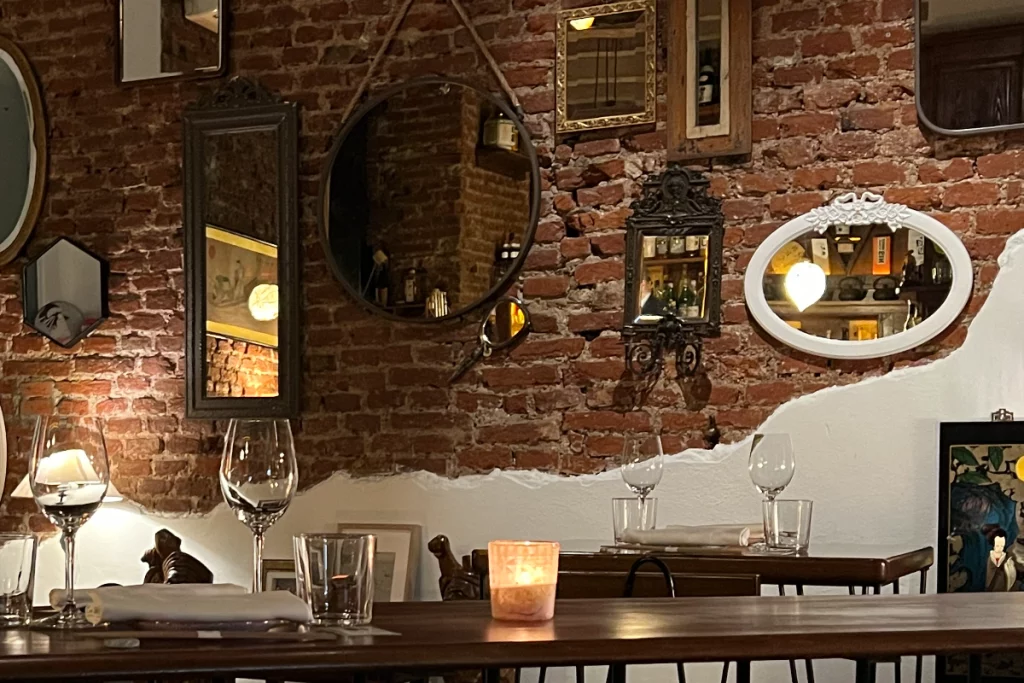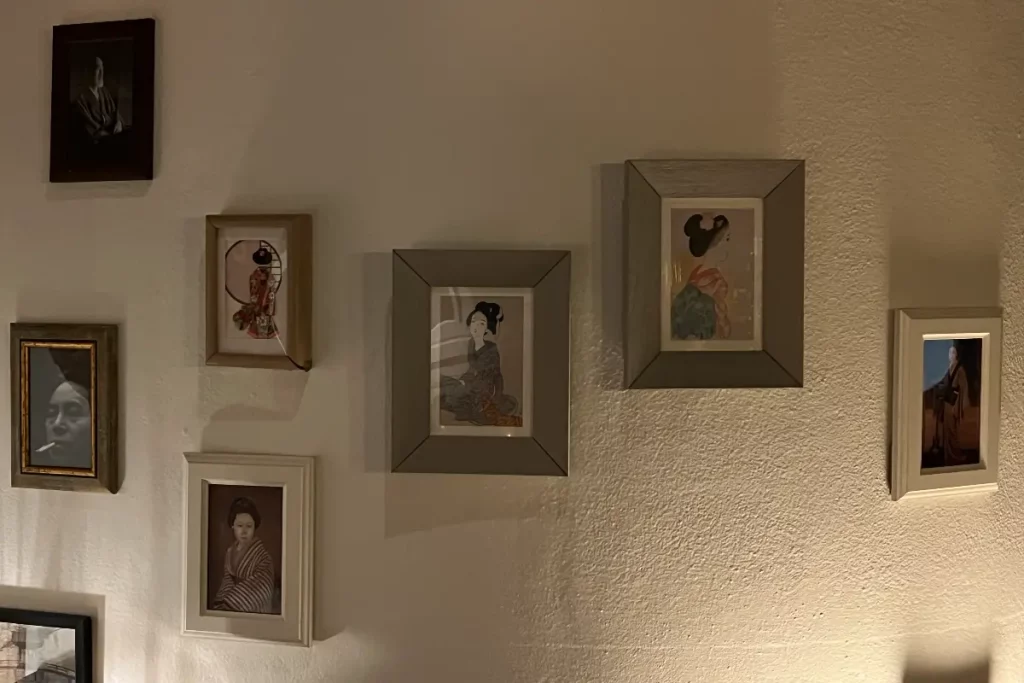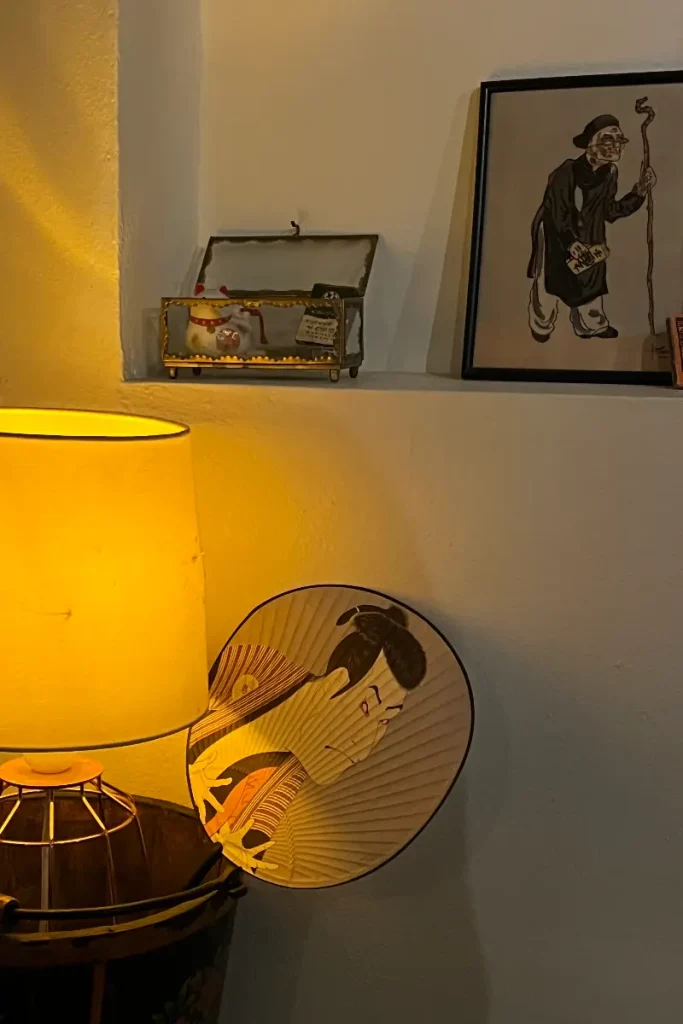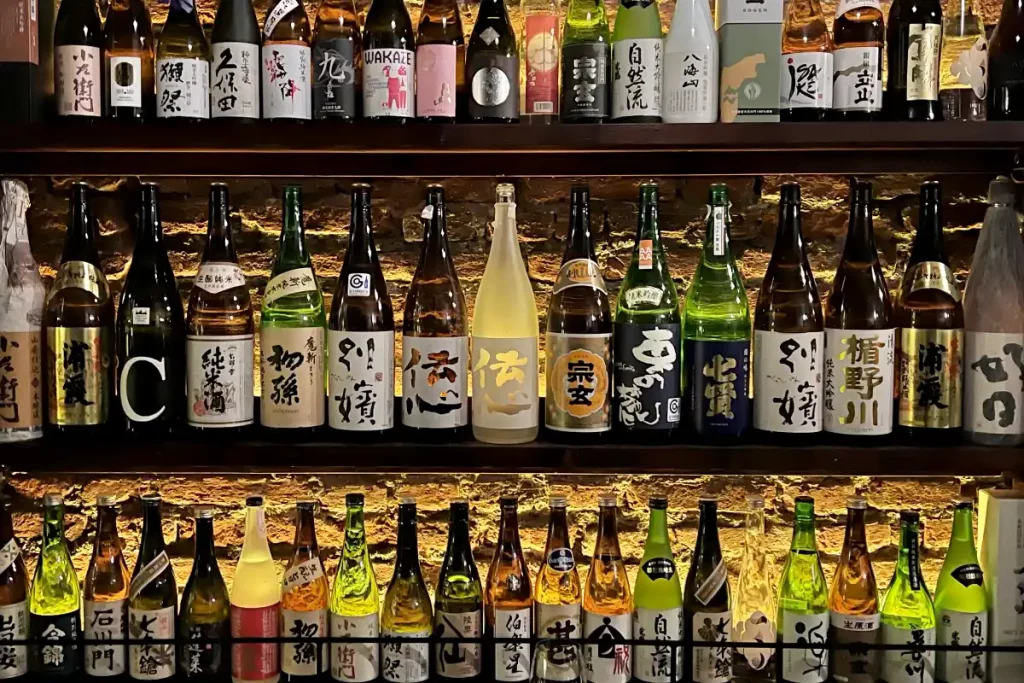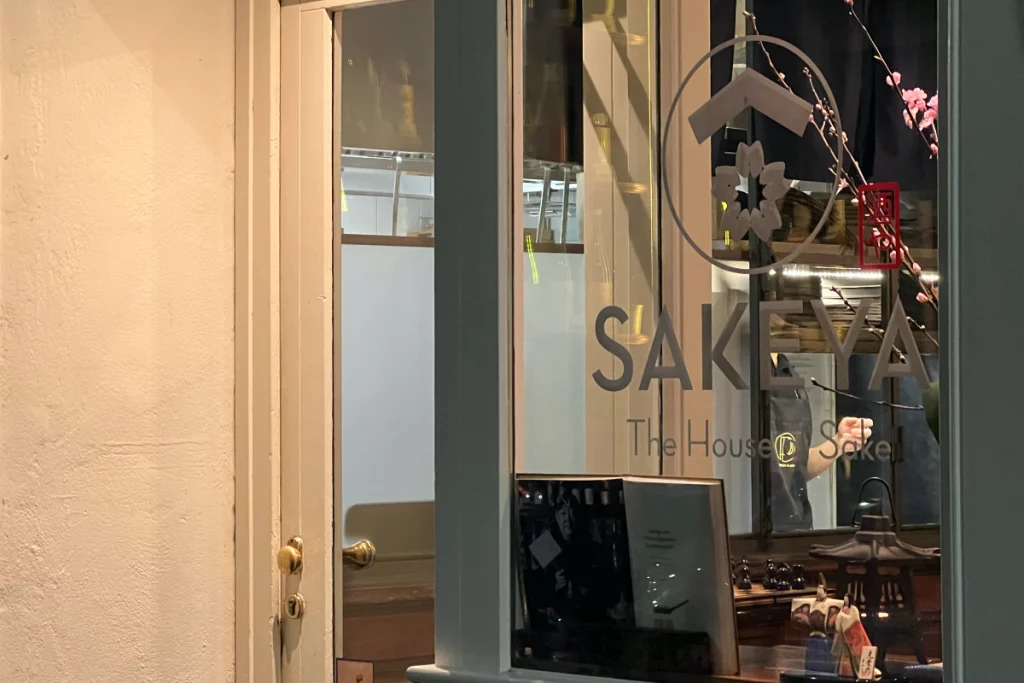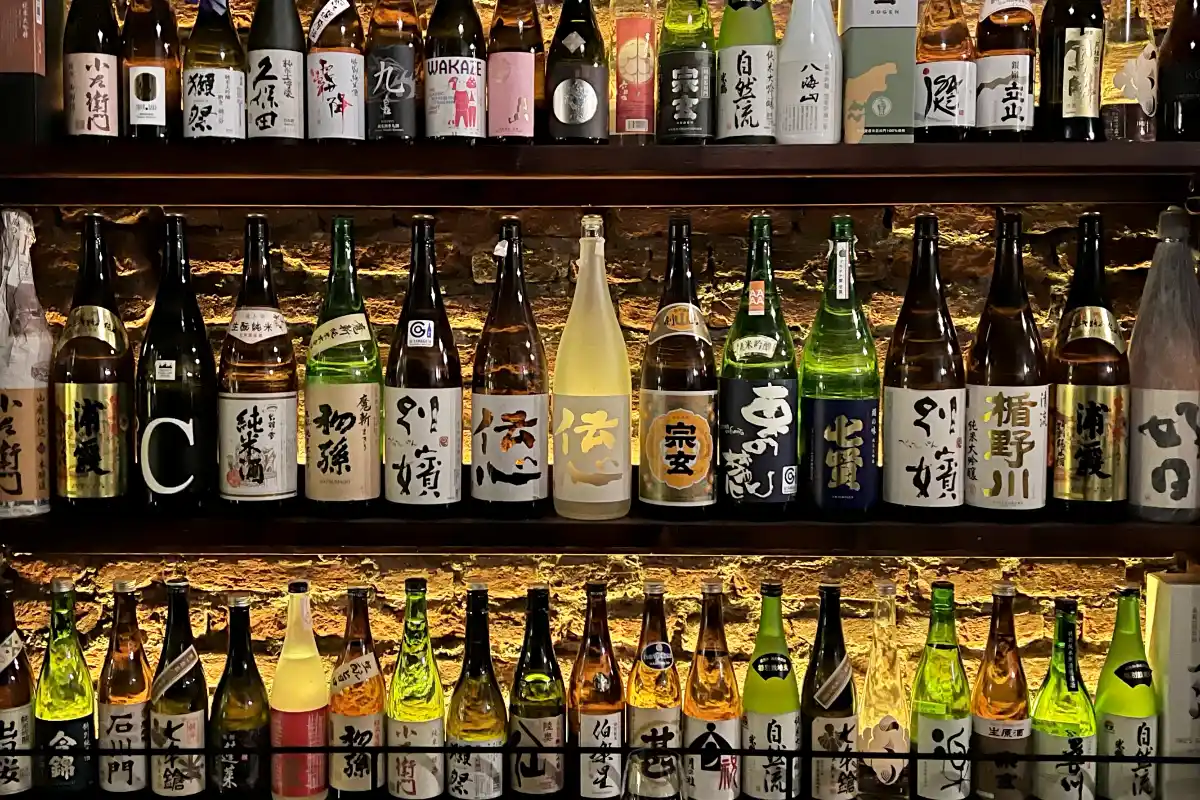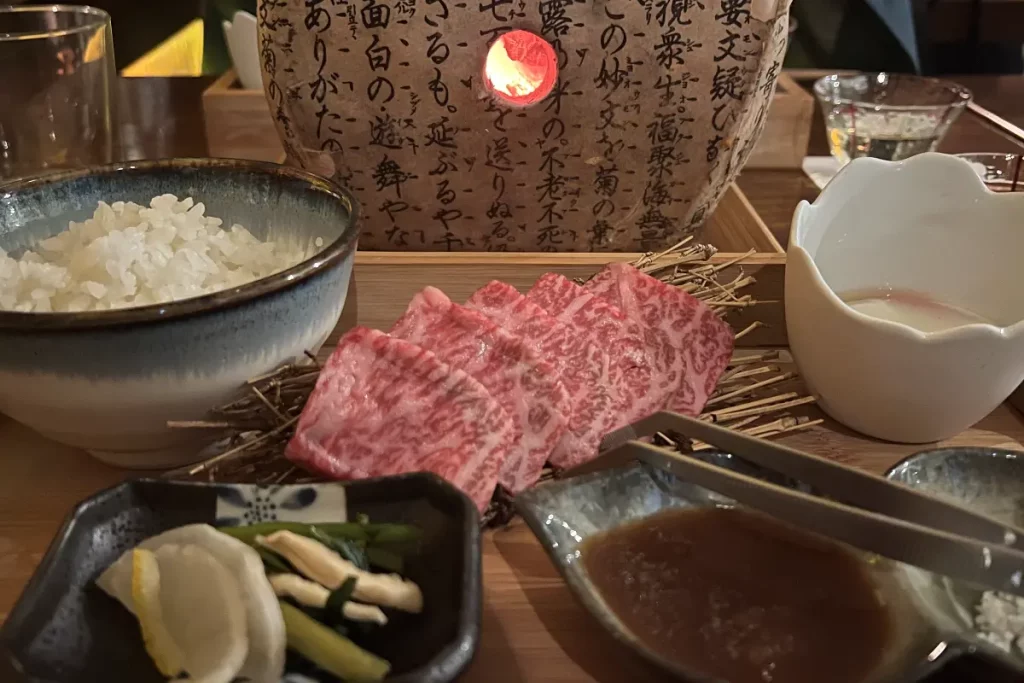Chef Masaki Inoguchi combines seasonal ingredients and the Obanzai culinary tradition with European flavors to accompany the sake tasting experience in the Japanese speakeasy
Sakeya, Milan: the first House of Sake in Italy
Sakeya is the first Italian House of Sake, opened in Milan with the patronage of the Japanese prefectures. ‘Sake ya’ in Japanese means just that – sake house. Located in the Porta Genova quarter, Sakeya offers a selection of one hundred and fifty different sakes from forty-seven Japanese regions, with in addition thirty extra labels every month. The bar also includes a range of other Japanese drinks, such as whisky, gin, beer, shochu, awamori, and tea. All the products, alongside with Japanese zakkas (miscellaneous objects), can be purchased at the shop. Moreover, Sakeya’s mixologists offer a list of cocktails, ranging from classics to house specialties based on sake.
In the bistro, sake is paired with a selection of dishes created by Japanese chef Masaki Inoguchi. These mix traditional Japanese cuisine – inspired by its territory and seasonal ingredients – with the European gastronomical offer. The same fusion approach that characterizes Sakeya’s owner, Sake Company.
Sake Company: diversity and inclusion, a bridge between Italy and Japan
Diversity and inclusion are Sake Company’s key values, which reflect in its owners, Lorenzo Ferraboschi and Maiko Takashima. Lorenzo is Italian and Maiko is Japanese, and they are partners both at work and in life. Their company’s aim is to create a dialogue between Italian and Japanese cultures through the traditional Nipponese drink. In 2015, Lorenzo and Maiko noticed that Italy lacked a knowledge of sake, while the popularity of Japanese culinary specialties, such as ramen and sushi, was growing.
Therefore, they not only began to import sake in Italy, but also to spread its culture with the Italian Sake Sommelier Association. The academy holds courses for sake experts and organizes events to share its secrets.
Nihonshu: a fermented beverage made with local raw materials
The word ‘sake’ in Japanese generally means ‘alcoholic drink’. The traditional Japanese alcoholic beverage also known as ‘rice wine’, which in the West is referred to as sake, is actually called ‘nihonshu’. Based on local raw materials, nihonshu is obtained through rice fermentation. In Japan two rice varieties are produced: hanmai, used for cooking, and sakamai, used only in the nihonshu production. Sakamai is characterized by bigger and softer grains, and by higher levels of water absorption. This is a crucial element, since nihonshu is made for eighty percent of water, whose quality plays also a key role.
Rice ferments thanks to a particular mushroom, Aspergillus oryzae. Commonly known as koji, it turns the rice starch into sugar, which, with the addition of yeast, produces the fermentation. Different levels of rice whitening account for different types of nihonshu, each with its own required serving temperature, just like wine.
The origin of nihonshu is rooted in the history of Japanese civilization, whose development has always been linked to rice cultivation. Chinese documents of the third century already describe their neighbors as being passionate about it, drinking it together on funeral gatherings. Between the twelfth and the fifteenth centuries, when modern fermentation techniques were developed, also Buddhist and Shinto temples began to produce the beverage. In 1904 Japanese government opened the first institute for the research on nihonshu and in 1907 the first degustation contest was held.
Today, nihonshu is still the national beverage in Japan, where there are at present time nearly one thousand and five hundred ‘sakagura’ (breweries). Some are centuries-old, passed down from generation to generation, others more recent.
The House of Sake: cultural melting pot and circular economy
Sake Company opened Sakeya to make people experience sake the Japanese way. Therefore, the place was designed following the style of Japanese cocktail bars, which resemble the classic American speakeasy. At the end of the Nineteenth century, cocktails became popular in the US thanks to Jerry Thomas. In the same period, Japan was opening up to the west and welcoming American diplomats, who carried with them the new trend. The Japanese emperor at the time liked it so much, he began entertaining his guests with cocktails.
Sakeya’s interior design is the result of a combination of European and Japanese vibes, obtained through a circular economy. Indeed, most of the furniture and decorations come from Japanese flea markets. The counter at the entrance, for instance, comes from a pharmacy. Bricks are exposed, wood reigns and mixes with bohemian elements. A whole-wall shelf with hundreds of sake bottles faces the bistro and a map of Japan helps guests discovering the provenience of their drinks. Hidden behind a curtain and a wooden door is also a private room dedicated to lovers, with only two chairs facing each other. The kitchen is open to view.
At Sakeya sake is co-protagonist with food
When Sake Company first started importing sake in Italy, they discovered that there was a common misunderstanding about this product. People used to see it as a distillate, while sake is actually a table beverage, just like wine. Its aim is to accompany and enhancing food, extending aromas, scents and perceptions. Sake is not a protagonist, but a co-protagonist in Japanese culinary tradition.
A bond embraced by Sakeya, but from a different perspective. Here, the starting point is sake, with a menu specifically designed to dialogue with it. The staff, composed of both Italian and Japanese sake sommeliers, guides guests in the pairing of plates and sakes. But, first of all, they welcome them into Japanese enogastronomic culture with some information, such as the above-mentioned linguistic difference between the words ‘sake’ and ‘nihonshu’.
Obanzai: Kyoto’s culinary philosophy as a base for Sakeya’s menu
The menu is written in Hokusai style on rice paper, decorated with typical Japanese illustrations. The first page is entitled ‘Obanzai’, while sushi is located at the end. Obanzai is a traditional style of Japanese cuisine native to Kyoto and is the main inspiration of Sakeya’s culinary offer.
Traditionally, Obanzai is based on five core spiritual elements. ‘Honma mon’, which means ‘genuine things’ and consists in using valuable seasonings and cooking implements. ‘Ambai’ (balance), calling for a search of a unique balance between all the ingredients, obtained with flexibility and creativity. ‘Deaimon’ (encounter) – a word that stands for the act of living with nature or community – cherishing encounters made through acquisition and use of ingredients. ‘Omotenashi’ (hospitality), an invitation to match people’s mood when cooking for them, to enjoy the meal, to pay attention to health. ‘Shimatsu’ (not creating waste), an exhortation to put everything available to good use.
From Kyoto come also the China in which the dishes are served.
Chef Masaki Inoguchi: traditional Japanese cuisine and Western fusion
Using Obanzai as a starting point, Japanese chef Masaki Inoguchi – or Masa, as they call him at Sakeya – designs plates that fuse traditional Japanese cuisine with Western flavors. His aim is to enhance the sake experience, while at the same time showing the versatility of this beverage. Indeed, at Sakeya they believe that sake can be successfully combined also with Western cuisine.
The menu features both meat and fish proposals. Wagyu, the Japanese beef, is the protagonist of several plates. Wagyu No Tataki, a sashimi of seared wagyu, served on daikon salad and carrot with an egg cooked at low temperature. Sumibi Kushiyaki, wagyu skewers cooked on the traditional Japanese charcoal grill. Kurumaebi No Kobujime, Mediterranean shrimps marinated with kombu seaweed,
served with homemade wagyu lard, kumquat and caviar. Wagyu Ozaki Sumibiyaki, a specialty by chef Masa consisting in a typical Japanese meat grilling method called yakiniku.
As for the fish, there are other plates than sushi. Unagi, eel skewers with teryaki sauce. Satsumaage Takoyakiare, octopus meatballs in tempura with squid ink, nori seaweed and katsuoboshi flakes, made of dried and smoked bonito tuna. Octopus is also the protagonist of Yaki Tako, a specialty by the chef consisting in confit octopus cooked in three stages, pumpkin puree flavored with masala and sweet purple potato chips. Also a Masa specialty is Gindara: Alaskan sablefish fillet marinated in white miso sauce, ginger and yuzu, served with beet powder and tsukemono.
The dessert menu includes a selection of traditional Japanese desserts, called Wagashi No Miriawase, such as Dorayaki, Kasutera and Mochi. In addition, there are more modern and creative proposals. Uji Matcha Anko, matcha tea ice cream with anko cream, yuzu jam, meringue, and kinako. Younashi Harumaki, fried rolls filled with pear, gorgonzola ice cream, pistachio crumble and truffled honey. Kuri Hiroi, tofu ice cream with coconut milk, chestnut cream, candied brown, chestnut crumble, hojicha toasted tea, dried plums and pasta chips with chocolate. Every dessert comes with an advice on which nihonshu or umeshu (Japanese liqueur) to pair with it.
Sakeya
Sakeya is the first Italian House of Sake. Located in Milan, in Via Cesare da Sesto 1, it includes a cocktail bar, a bistro and a shop. Here, one hundred and fifty different types of sake from forty-seven Japan regions are served in combination with a menu that blends Japanese cuisine with Western influences.
The plates are designed by Japanese chef Masaki Inoguchi and guests are guided in their drink choices by certificated sake sommeliers.
Sakeya was opened by Sake Company – the main sake importer in Italy – with the patronage of the Japanese prefectures.
